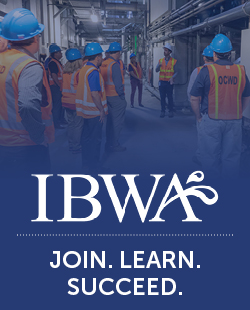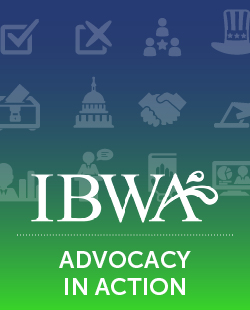Bottled Water Labeling
Bottled Water Labeling
Policy Statement
IBWA supports a uniform comprehensive system of labeling standards for bottled water at the national level that fully protects the public health and allows consumers easy access to clear and accurate information regarding bottled water. A patchwork of state and local requirements impedes interstate commerce and results in consumer confusion.
Background
U.S. citizens benefit from the unimpeded interstate commerce of consumer products. A national uniform label facilitates broader consumer understanding by providing one simple, easy to read label for purposes of comparison, and prevents potential deception that could arise from various and conflicting state requirements. If states create a patchwork quilt of differing labeling laws, marketing bottled water across state boundaries will become practically impossible and/or expensive. A uniform national standard allows bottlers to produce and apply the same label without regard to which state the product may be sent.
The promulgation of federal labeling laws and regulations has sought a necessary balance between the government’s responsibility to protect public health and provide consumer information and the abilities of bottled water companies to efficiently and cost effectively bring their products to market.
To promote national uniformity of certain food labeling requirements, Congress established preemption for numerous provisions of the Federal Food, Drug, and Cosmetic Act (FFDCA) in the Nutrition Labeling and Education Act (NLEA) of 1990.
In doing so, Congress recognized the disruptive impact that conflicting state labeling laws could have on the interstate commerce of foods. One of the goals of NLEA was to give industry the relief from State requirements that interfere with their ability to market products in all 50 states in an efficient and cost effective manner.
Federal standards of identity are among the Federal requirements to which the FFDCA national uniformity provisions give preemptive effect. Specifically, in section 403A(a)(1) of the act, Congress provided in pertinent part that “no State or political subdivision of a State may directly or indirectly establish . . . or continue in effect as to any food in interstate commerce . . . any requirement for a food which is the subject of a standard of identity under section 401 that is not identical to such standard of identity.”
Under section 401, FDA is authorized to promulgate regulations “establishing for any food, under its common or usual name so far as practicable, a reasonable definition and standard of identity.”
In addition to establishing compositional requirements and the common or usual name that must be used for labeling purposes, standards of identity may also require specific information that must appear on the product label to inform consumers of key product characteristics.
In 1995, FDA established standard of identity regulations for bottled water.
The standard of identity encompasses:
-a general description of bottled water;
-names that may be used to identify bottled water products (e.g., “bottled water,” “drinking water,” or alternative terms such as “purified water” or “spring water”); and
-FDA requirements for “other label statements” specific to bottled water products. Among the requirements for “other label statements” is a narrow source labeling provision, which addresses the extent to which bottled water must bear source labeling. The source labeling provision of the Federal standard provides that bottled water from a community water system must, unless expressly exempt, bear a label that states “from a community water system” or “from a municipal source,” as appropriate. Thus, the source-labeling requirement imposed by the Federal standard is generic, not specific, and applies only to water from a community water system.
State laws that require additional water source information on bottled water labels are preempted by Federal law. FDA during the bottled water standards of identity rulemaking considered requiring the water source on bottled water labels, but rejected the issue as not a material fact because other federal requirements provide the consumer with assurances as to the safety, quality, and type of water source. In addition, Federal law expressly preempts non-identical state requirements for foods subject to federal food standards.
The FDA believes that appropriate and feasible means to inform consumers about their bottled water include:
1. Providing on the bottled water label a company contact (with phone number or an address) that directs customers on how to obtain information.
2. A combination approach whereby some quality information would be specified on the label and the remainder of the information would be available through contact with the company.
3. Distribution of an information package with bulk water deliveries.
During the past few years, a number of state legislatures and regulatory agencies have considered additional labeling requirements beyond the national requirements, such as water sources, telephone numbers, mineral content, and water quality information.
IBWA’s guiding principles for legislation or regulation of bottled water labeling are outlined below.
Guiding Principles of Bottled Water Labeling
IBWA believes the following set of principles should guide the industry in addressing bottled water labels and labeling. A national, uniform comprehensive approach must be applied to labels and labeling requirements for bottled water, as with other food products.
National Uniformity – In order to facilitate broader consumer understanding of bottled water products by providing one simple, easy to read label and to facilitate interstate commerce, bottled water labeling requirements, as with other food products, should be governed by a national uniform system that is authorized by Congress and administered by the United States Food and Drug Administration.
Consumer access to information – Bottled water producers are extensively regulated by FDA and are required to monitor and test for numerous microbiological, physical, and chemical contaminants. Because of the FDA regulations, bottled water manufacturers have a great deal of information about the content of their products. As responsible manufacturers, they also possess detailed information about the source of their water, the processing it undergoes, and other areas of potential interest to consumers. FDA requires all food product labels, including bottled water labels, to conspicuously specify the name and place of business of the manufacturer, distributor, or packer, which provides consumers with the necessary information to contact the firm to obtain information about a specific brand of bottled water.
In addition, IBWA member companies also include a telephone number on all proprietary brands to further provide consumers with easy access to information about their bottled water.
Truthful claims and information – All information on bottled water labels, as with all other food products, shall be truthful and substantiated with facts. It is inappropriate to single out one food product for possible additional consumer information requirements when there is no public health or public policy basis. Indeed, many foods contain water as a primary ingredient, including soft drinks, juices, bottled teas and canned vegetables, among many others.
In promulgating the standards of identity for bottled water in 1995, FDA made determinations on the information necessary to be included on bottled water labels. This information along with the standards of quality for bottled water provides consumers with the material facts necessary to have confidence in bottled water. In 1990, Congress enacted the Nutrition Labeling and Education Act (NLEA), which requires food manufacturers to disclose nutritional information. NLEA requires bottled water companies to comply with its provisions if they make nutritional claims covered under NLEA, such as “sodium free” or “low sodium” on their labels.
Any health or therapeutic claims must be substantiated by reliable scientific studies and comply with FDA requirements for food product health claims.
Conclusion
The above principles comprise a uniform comprehensive approach to labeling bottled water and providing consumers with information about their specific brand of bottled water. Consumers are empowered by the choices they are able to make in a free market economy. With the information currently required to be on the bottled water label, consumers are able to have consistent information to compare bottled waters and a means to obtain additional information about their specific brand of bottled water to assist them in making an informed decision on the bottled water product.


